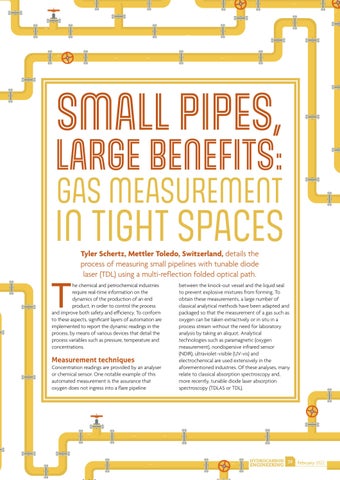T
Tyler Schertz, Mettler Toledo, Switzerland, details the process of measuring small pipelines with tunable diode laser (TDL) using a multi-reflection folded optical path.
he chemical and petrochemical industries require real-time information on the dynamics of the production of an end product, in order to control the process and improve both safety and efficiency. To conform to these aspects, significant layers of automation are implemented to report the dynamic readings in the process, by means of various devices that detail the process variables such as pressure, temperature and concentrations.
Measurement techniques Concentration readings are provided by an analyser or chemical sensor. One notable example of this automated measurement is the assurance that oxygen does not ingress into a flare pipeline
between the knock-out vessel and the liquid seal to prevent explosive mixtures from forming. To obtain these measurements, a large number of classical analytical methods have been adapted and packaged so that the measurement of a gas such as oxygen can be taken extractively or in situ in a process stream without the need for laboratory analysis by taking an aliquot. Analytical technologies such as paramagnetic (oxygen measurement), nondispersive infrared sensor (NDIR), ultraviolet-visible (UV-vis) and electrochemical are used extensively in the aforementioned industries. Of these analyses, many relate to classical absorption spectroscopy and, more recently, tunable diode laser absorption spectroscopy (TDLAS or TDL).
HYDROCARBON 39
ENGINEERING
February 2022












